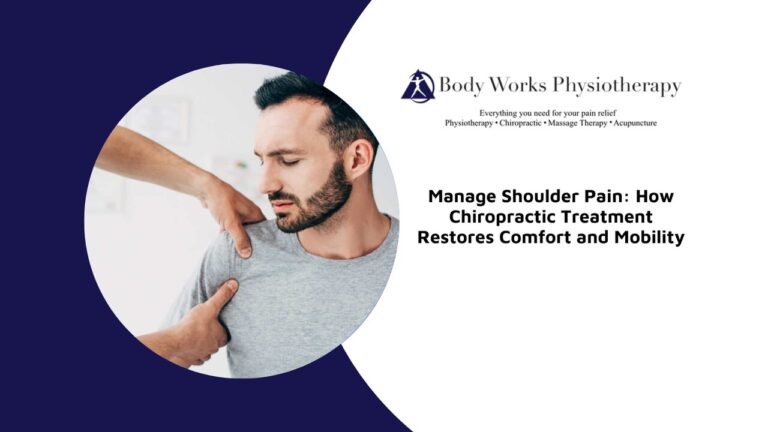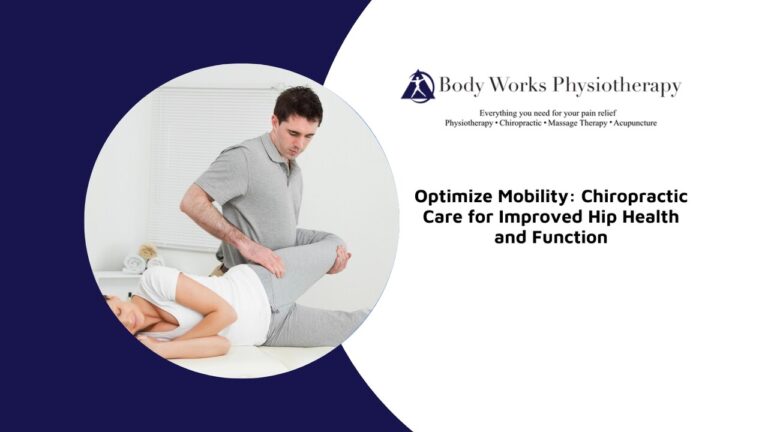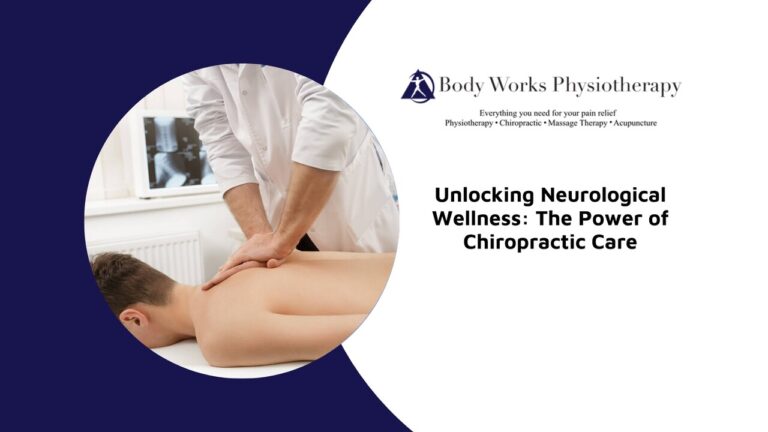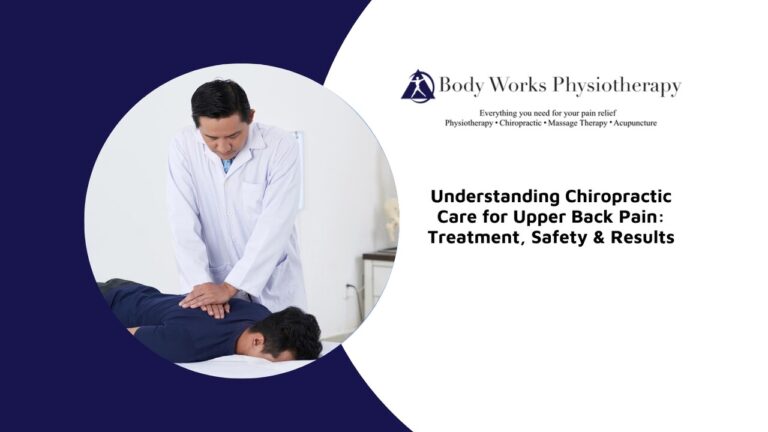
Dealing with a herniated disc can be a challenging and painful experience. While traditional treatments may include medication or even surgery, many people seek non-invasive alternatives that can address the root cause of the issue. Chiropractic care has emerged as a highly effective option for treating herniated discs. In this blog, we’ll explore how chiropractic care can help manage herniated discs, what techniques are used, and what you can expect during your treatment journey.
Understanding Herniated Discs
A herniated disc, also known as a slipped or ruptured disc, occurs when the soft, jelly-like center of a spinal disc pushes through a tear in its outer layer. This can irritate nearby nerves, leading to pain, numbness, or weakness in the affected area—most commonly in the lower back or neck. Herniated discs are often the result of age-related wear and tear, but they can also occur from improper lifting, sudden movements, or trauma.
In severe cases, the disc can compress a nerve, causing radiating pain down the legs (sciatica) or arms. Chiropractic care offers a natural approach to managing the symptoms of a herniated disc by addressing spinal function and reducing nerve pressure, which promotes healing without the need for surgery or medication.
How Chiropractic Care Benefits Herniated Discs
A chiropractor can help treat a herniated disc by using spinal manipulation and other non-invasive techniques. Chiropractic care focuses on correcting spinal function, which helps relieve nerve compression and promotes natural healing. This approach helps reduce inflammation, restore movement, and address the root cause of pain without relying on medication or surgery. Here is a look at how chiropractic care benefits individuals with herniated discs:
- Reduce Pressure on Nerves: Dysfunction in the spine can place undue pressure on the nerves, causing pain, numbness, and weakness. Chiropractic care helps fix this dysfunction, which eases this pressure and allows the nerves to function normally, reducing symptoms like tingling and discomfort.
- Alleviate Pain: Chiropractic care focuses on treating the source of pain rather than masking it. Techniques such as spinal manipulation and flexion-distraction target the herniated disc, providing effective pain relief without relying on pain medications or invasive treatments like surgery.
- Improve Mobility: A herniated disc can severely restrict movement, making it difficult to perform everyday activities. Chiropractic care restores proper function and relieves pressure on the spine, helping improve range of motion and allowing individuals to move more freely and comfortably.
- Non-Invasive Treatment: Chiropractic care is a safe, non-invasive alternative to surgical options. It avoids the risks associated with surgery and medication, offering a natural way to manage herniated disc symptoms. This makes it an appealing option for those seeking a conservative treatment method.
By addressing the root cause of herniated disc pain and focusing on long-term recovery, chiropractic care promotes overall spinal health while minimizing the need for more invasive interventions.
Your First Chiropractic Visit for a Herniated Disc: What to Expect
During your first chiropractic visit for a herniated disc, your chiropractor will conduct a thorough assessment, including a review of your medical history, physical examination, and possibly imaging tests like X-rays. This helps them pinpoint the exact location and severity of the herniated disc. You will also receive an initial treatment, which may include gentle spinal manipulation or manual therapy, and a personalized treatment plan moving forward.
How Long Does It Take to See Improvement in a Herniated Disc With Chiropractic Care?
The time it takes to see improvement in a herniated disc with chiropractic care varies based on the severity of the injury. Many people experience relief after several sessions, typically within 2 to 6 weeks. Consistent treatment helps reduce pain, inflammation, and nerve pressure, but your chiropractor will create a personalized treatment plan that aligns with your recovery needs.
Chiropractic Techniques Used for Herniated Disc Treatment
Chiropractors use a variety of non-invasive techniques to relieve the pain and discomfort caused by herniated discs. Common chiropractic techniques for treating a herniated disc include:
- Spinal Manipulation: With this technique, controlled force is applied to the spine to restore function. By correcting spinal function, chiropractors help reduce nerve pressure and promote natural healing.
- Flexion-Distraction: This is a gentle, non-thrusting technique designed to relieve pressure on the disc and increase space between the vertebrae. It uses a specialized table to stretch the spine, and it is particularly effective for relieving pressure on the herniated disc and alleviating nerve pain.
- Pelvic Blocking Techniques: Chiropractors may also use pelvic blocking techniques. Soft wedges are placed under the pelvis to help manipulate the spine and reduce pressure on the herniated disc. This technique gently mobilizes the spine and helps to alleviate disc-related discomfort.
- Manual Therapy: Chiropractors may use hands-on techniques to massage and mobilize the soft tissues surrounding the spine. This improves circulation, reduces muscle tension, and supports the healing of the affected disc.
These techniques are carefully chosen based on your specific condition, providing targeted relief without the need for invasive treatments.
Is Chiropractic Care Safe for Treating a Herniated Disc?
Yes, chiropractic care is a safe, non-invasive treatment option for many people with herniated discs. Chiropractors are trained to assess the severity of your condition and use gentle techniques that avoid aggravating the injury. If your chiropractor determines that your herniated disc is too severe for manual manipulation, they will recommend alternative treatments to ensure your safety and recovery.
Complementing Chiropractic Treatment for Herniated Discs: Essential Lifestyle Changes
To complement chiropractic treatment for a herniated disc, it’s essential to adopt healthy lifestyle habits, such as:
- Regular Exercise: Focus on low-impact activities like walking or swimming to strengthen the muscles that support your spine.
- Proper Posture: Maintain good posture when sitting, standing, and lifting to avoid further strain on your back.
- Ergonomic Adjustments: Use ergonomic furniture and equipment at work to reduce pressure on your spine.
- Weight Management: Maintain a healthy weight to lessen the load on your back and joints.
By incorporating these lifestyle changes, you can enhance your chiropractic care and promote long-term recovery from a herniated disc.
Can Herniated Discs Be Fixed Permanently?
Herniated discs typically don’t “heal” in the traditional sense, but with proper treatment, the symptoms can be managed effectively. Chiropractic care helps reduce pressure on the affected nerves through spinal manipulation, promoting natural healing and significant pain relief. While these treatments can lead to long-term improvements, maintaining spinal health is crucial to preventing recurrences. Regular exercise, good posture, and avoiding strain on the spine are essential in managing the condition.
In some cases, the body may reabsorb the herniated material over time, but ongoing chiropractic care and lifestyle adjustments are key to achieving lasting relief.
You Deserve to Live Pain-Free
If you’re suffering from the debilitating effects of a herniated disc and looking for a non-invasive solution, chiropractic care could be the answer. At Body Works Physiotherapy in Scarborough, our skilled chiropractors provide personalized treatment plans that focus on alleviating your pain and restoring your mobility. Don’t let a herniated disc disrupt your daily life—contact us today to schedule an appointment and take the first step toward recovery. Your journey to a pain-free life starts here.






